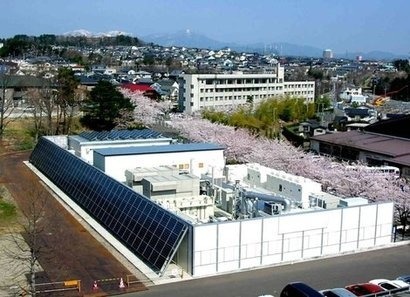
O'Brien & Gere (OBG)provides flexible and scalable plans for securing energy supplies. With the ability to disconnect from main grids, the company sees microgrids as a real solution for future energy networks. Microgrids provide flexibility and peace of mind as a more reliant and resilient energy source at a time when Americans are three times more likely to lose power than in 1984. With this in mind, OBG has produced a 'Why Microgrids Matter' infographic which demonstrates the positive impact a microgrid can have within a community.
REM talked to Vice President of OBG Darek Letkiewicz to find out more.
Tell me about O'Brien & Gere (OBG) and what it does?
For more than 70 years, OBG has specialized in engineering and problem solving, but the Company’s real strength is creating comprehensive, integrated solutions for its clients in the areas of energy, advanced manufacturing, environment, and water. It is easy to see the level of connectivity across these areas, especially when discussing renewable energy since many of the drivers are environmentally oriented.
In the coming decades, the ways we produce, store, deliver, and consume energy will drastically change and
OBG assists a wide array of public and private sector clients in navigating this dynamic and ever changing landscape. With a lengthy track record of experience, OBG offers effective solutions to navigate the complexities of microgrids to provide fully operable systems, including generation, distribution, storage, and integration with advanced monitoring, control, and automation systems. From traditional core central utility assets and infrastructure to advanced technologies in renewables, storage, and microgrids, OBG provides smart, sustainable solutions for the needs of today and the challenges of the future.
What is a microgrid?
Using the U.S. Department of Energy definition, a microgrid is a localized grid of interconnected loads and distributed energy resources that act as a single controllable entity. This localized grid is normally connected to the traditional electric grid, but can be disconnected to operate as an independent energy source.
Generation sources can include combined heat and power, batteries, fuel cells, solar, wind, or other energy sources.
To what extent are modern electricity grids unsuitable for the new renewable energy technologies coming in, and what can be done or even has to be done to rectify this?
New renewable energy technologies present certain technical challenges to our grid. Since these technologies rely on natural resources, such as wind and the sun as their fuel sources for energy production; our inability to schedule or predict their output is the current challenge. The modern grid, or the “grid of the future,” has to be smart enough to account for what we think might happen, and also be capable of making adjustments for what truly is happening. Advancements in ways to predict but also react to real‐time conditions, along with the regulations that help facilitate these transactions, will be very important in the grid of the future.
What are the main advantages of microgrids in this respect?
As energy prices increase and the power infrastructure continues to age, the potential to harness a standalone energy source, through energy storage and microgrids, becomes more viable and economical.
Increasing populations and resulting demand on the power grid leave power systems vulnerable to
cyber‐attacks, natural disasters, and resulting power failures. Microgrids can offer a compelling risk mitigation strategy while providing energy independence, reliability, and resiliency through their integration with renewable resources. By co‐locating generation closer to the loads that need the energy, microgrids can compartmentalize needs more accurately, providing greater security and control. This again provides greater resiliency by reducing the need to transmit power over hundreds of miles or to remote power plants.
Microgrids also optimize economic incentives through peak shaving and supply management with demand response.
What renewable energy and energy efficiency technologies are most suitable for microgrids and are currently being deployed by them?
At this point, solar and wind technologies are understood in depth; new advancements in energy storage will provide some good complementary services to smooth out our ability to improve their predictability.
Locational dependencies and available resources will influence what advantages will dedicate and drive you towards a certain type of renewable technology. Current energy efficiency technologies include advancement in LED and lighting technologies as well as building control systems are optimizing and influencing load profiles at all hours of the day. It is important to note that efficiency measures are a critical first implementation step which must be taken, since they impact the energy baseline that a microgrid and local distribution resources like renewables will attempt to address in their design and operation.
How are microgrids currently being constructed and by who?
Campuses and communities make up the majority of microgrid capacity, followed by municipal utilities. In recent years, U.S. military installations have also invested heavily in microgrids. These three main groups make up the majority of new developments largely because they’re already designed like microgrids and are controlled at a localized level. GTM Research has worked on providing research and projections that discuss the most receptive market segments for microgrids.
How do you think things will change over the next 20 years or so?
From a technical perspective, technology is advancing very fast and at the same time, the cost of generating resources, control software, measurement, as well as communications is being driven down. A great deal is going to be achievable in the next 20 years; however, outdated policy and regulatory frameworks, which were largely built on the traditional electrical systems established 70 years ago, are inhibiting significant progress in technology and must evolve to facilitate this rapid growth.
For additional information:

